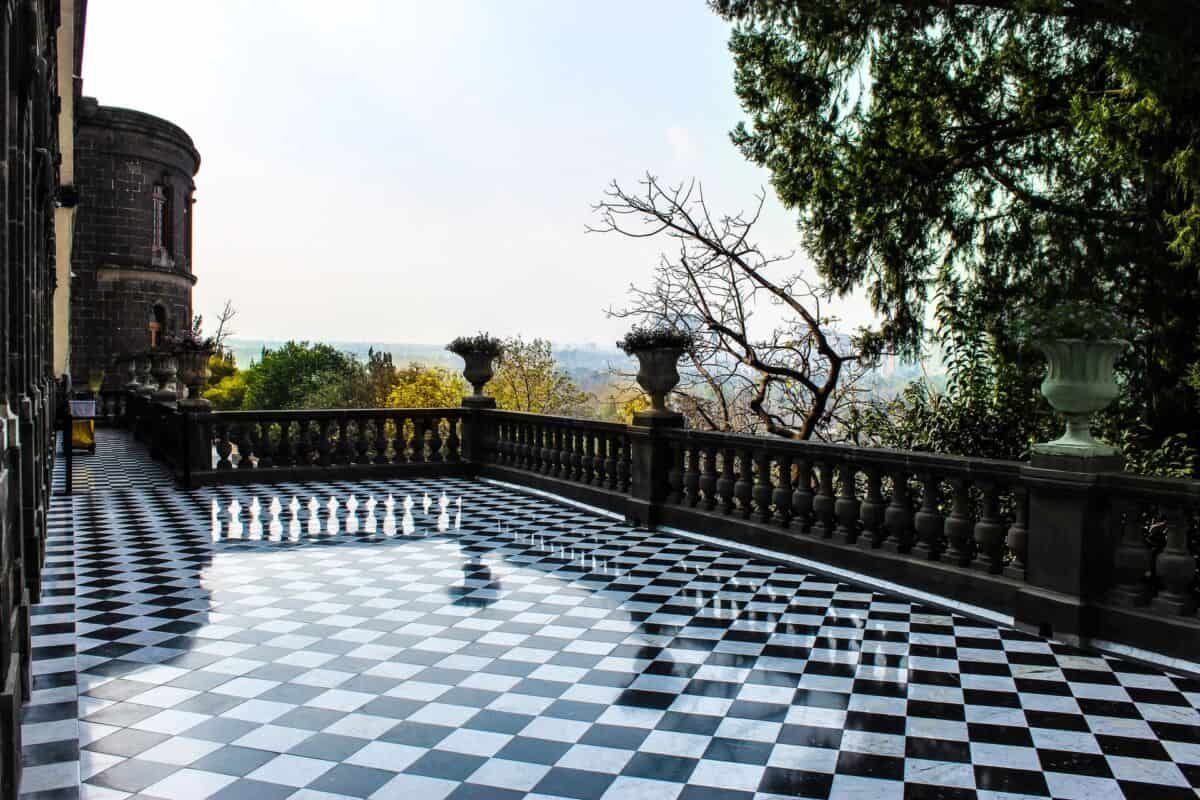Having tile on your balcony can add charm to your outdoor living space. Not all tiles are equal, though. You will need to choose the right outdoor materials and the correct installation, to ensure you can enjoy your tile balcony for years to come.
To lay tiles on a balcony, you need to ensure you have tiles that are suitable for being outdoors, employ waterproofing procedures, and successfully seal the entire project to keep it looking beautiful.
In this article, we will cover each of the 9 simple steps in detail to lay tiles on your balcony like a pro.
Find the Tile You Want to Install
Not all tiles are perfect for outdoor living spaces. While some tiles may look beautiful on patios and balconies, they can chip and breakdown over time with exposure to the elements. Once you install them on your balcony, you do not want to repeat it in a few years due to the tiles cracking or chipping.
A slip-resistant tile is essential for outdoor areas. Your balcony will get wet, and you want to avoid the surface becoming too slippery during that time. Personal safety is also paramount when considering the type of outdoor tile you install for your balcony. Other industry tests include water absorption ratings, crazing, and freeze-thaw properties. By utilizing the products designed for outdoor weather conditions, you eliminate stress about your tile’s permanence.
The outdoor tile selections available for your balcony include:
- Natural Stone: Granite, slate, limestone, travertine
- Porcelain
- Wood Tiles
Each of these options can give your balcony a comforting feeling while minimizing regular maintenance. By exploring your choices and ensuring that you choose a tile rated for outdoor use, you are sure to love the new look.
Here is a helpful video that covers important planning aspects when installing tile on a balcony:
Prepare Your Balcony
For concrete balconies, you will need to rough up the concrete’s surface if you have to remove any old sealer or curing compound that still exists. This removal can be accomplished with a bead blaster or by using Xylene and a pressure washer.
The grading of your balcony will also need to be determined to avoid any stationary water. No matter what materials you use, it is of utmost importance that there is adequate water drainage. There should not be any stagnant water at all on the balcony.
Even with the best waterproofing methods, outdoor tiles will not last if they are consistently sitting in water. A grading of 1/4″ per foot is standard to allow any water to leave the surface. Thin-set mortar can help grade the balcony to the 2% needed to prevent stagnant water from outside elements.
Choose Proper Mortar and Expansion Joints
Depending on the size of your balcony, consideration for expansion joints throughout the surface is essential. These joints help eliminate any future issues with movement that can occur with freezing and thawing or building movements. Expansion joints are for outdoor surface areas of eight feet or more.
Your mortar must be for outdoor weather conditions. As a general rule, outdoor tiling projects work best with modified thin-set mortar. This option is the best to eliminate moisture absorption, minimize tile movement, and maintain a strong bond to the tile.
Follow the mixing instructions on your mortar to reach the desired consistency. Different brands will have various mixing methods, so be sure you are using the proper mixing directions. Some mortar types will require mixing, sit for a designated amount of time, then mixed again. You will need to lay down a thin layer of mortar that covers the entire balcony. This process helps keep it waterproof over several steps.
Install a Waterproof Membrane to the Balcony
Before you begin installing the tile, you have to install a waterproof membrane to your balcony. Tile is not 100% waterproof. Therefore, you will need to protect your balcony. This protection comes in the form of a waterproof membrane. There are many different types available, so research will be needed to decide which will work best for your outdoor living space.
Waterproof membranes come in either a rolled sheet of material or a liquid to apply to the surface. Depending on the size of your balcony, a sheet of a waterproof membrane may be more than enough to cover the surface without worrying about overlapping joints. Alternatively, some individuals prefer the liquid waterproof membrane to avoid any joints and create a seamless barrier.
Cut the waterproof membrane to fit the measurements of your balcony. Some homeowners will wrap the membrane around the edges of the balcony if they are able. This method eliminates a seam on the edges. Apply the waterproof membrane over the first layer of thin-set mortar. If you have seams with the membrane, you will have to ensure you use membrane strips to seal them correctly.
Once the mortar is dry, use a silicone caulking to seal any edges around the membrane. These edges include along the walls, around posts and railings. The caulking will help ensure no water will seep into the open cracks or spaces and sit under the tile, causing damage.
Use Mortar Adhesive Again and Install the Tiles
Once you are ready to install the tiles, you will need to be diligent on the timing and spacing. Mortar will dry quickly, so you should only spread out enough mortar to lay down three or four tiles at a time. You should only cover the section of the balcony you are currently working in with the tile adhesive.
Lay the tiles down with spacers between each tile. Remember to use expansion joints at regular intervals to help with any movement later on. Once you cover the balcony with tiles, the mortar must dry before the next step.
Wait 24 Hours for the Tiles to Settle
Depending on your weather conditions, the mortar may settle earlier than expected. Let your mortar and tiles rest for 24 hours before moving on to the next step. It is always better to let the tiles and mortar settle longer than recommended, instead of less than 24 hours to avoid any problems.
Apply the Grout and Grout Sealer
Grout is the material installed in between the tiles. Choosing a grout that is stain and fade resistant will help keep your project looking good as new for years. Be sure to obtain the proper grout for outdoor use, and that can withstand regular exposure to the elements.
Use a grout float to apply the grout between each tile. Always apply grout diagonally across the expansion joints. You can easily wipe off any excess grout on the tile surfaces with a damp cloth or sponge.
The grout will need to be completely dry before you apply the sealer. Be sure to check the instructions on the brand of grout to see what the recommended drying time is. Allow additional time to dry since the recommended time is typically in ideal environmental conditions.
Apply the grout sealer to the grout after it has completely dried to ensure maximum waterproofing between the tiles.
Apply a Sealant to the Entire Balcony Tile
Once the grout sealer has dried completely, you can now seal the entire balcony. This sealing procedure can be done with a paintbrush by hand, or with a foam roller. Touch-ups should be done with a paintbrush around the edges and in between posts or railings. Different tile materials will require different sealants, so be sure to choose a sealer rated for your specific tile and for outdoor use.
Let Dry, Then Enjoy
Once you finish the previous steps, all you need to do is let the sealant dry before you can enjoy all your hard work. Do not damage all of your labor by rushing out to enjoy your new tiled balcony.
Conclusion
By following these 9 simple steps, you are sure to lay tiles on your balcony like a pro. Remember the key aspects of choosing supplies specifically for outdoor elements, and you will be able to enjoy your new tile balcony in no time.

